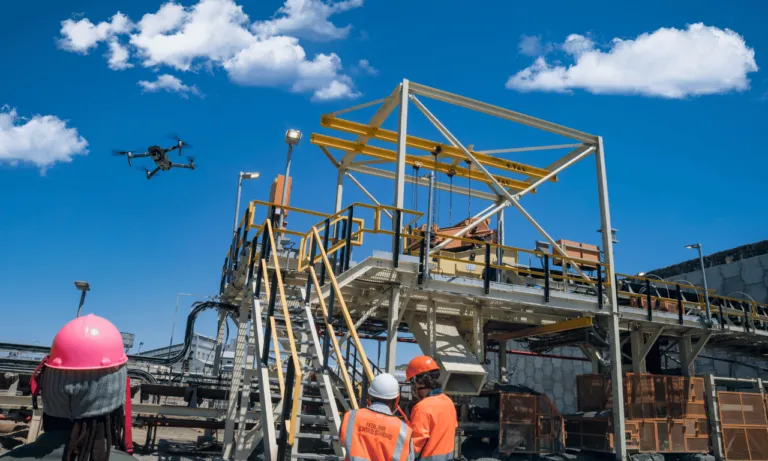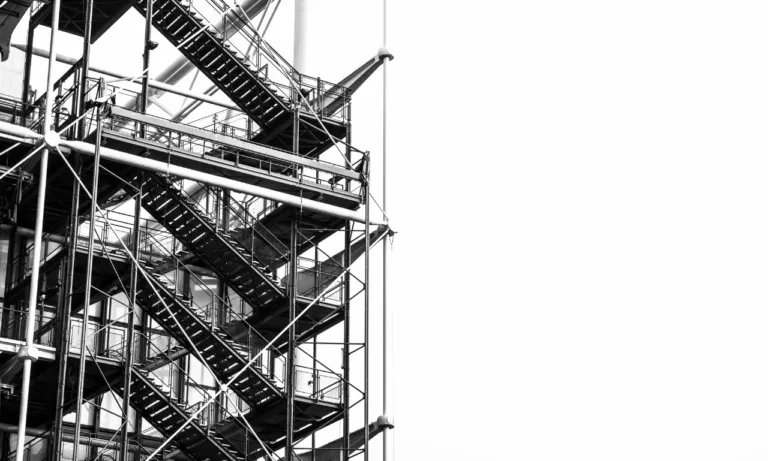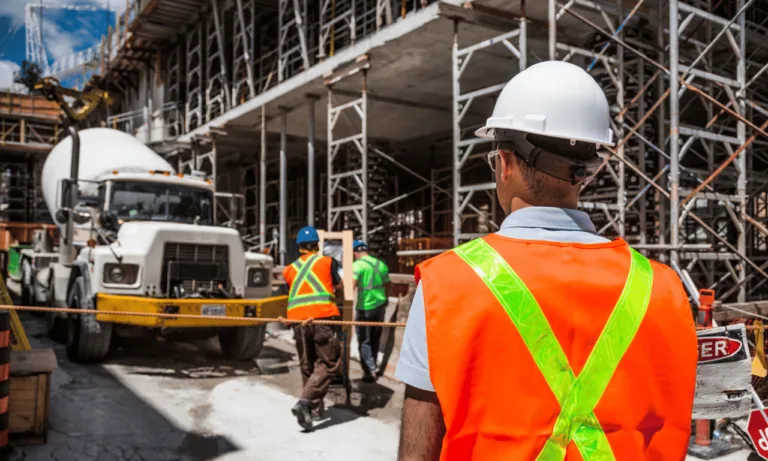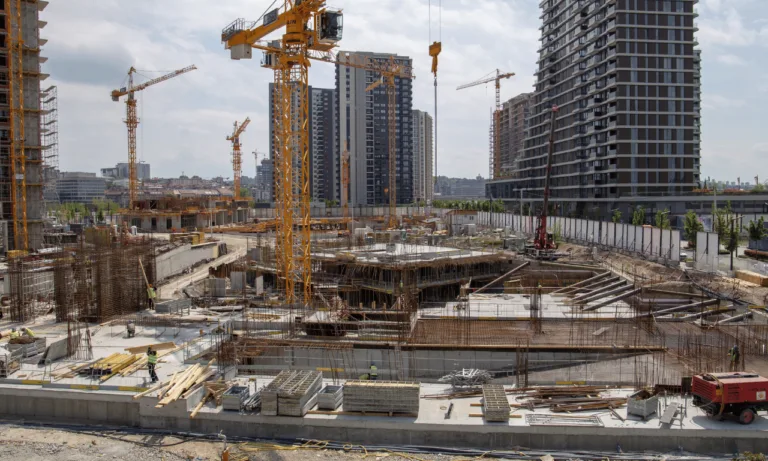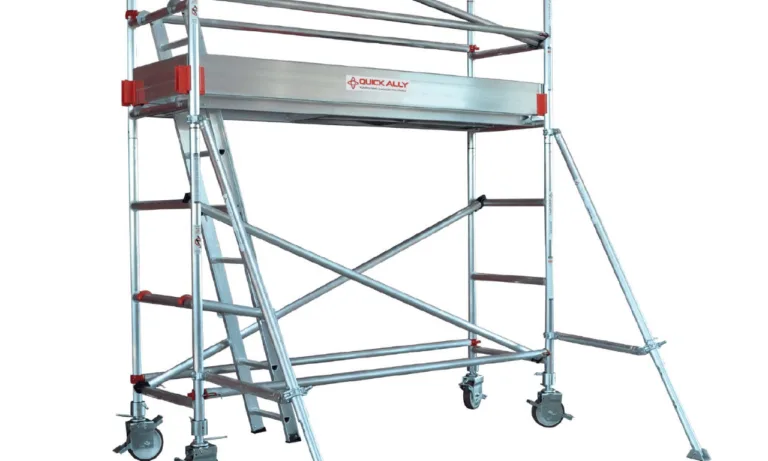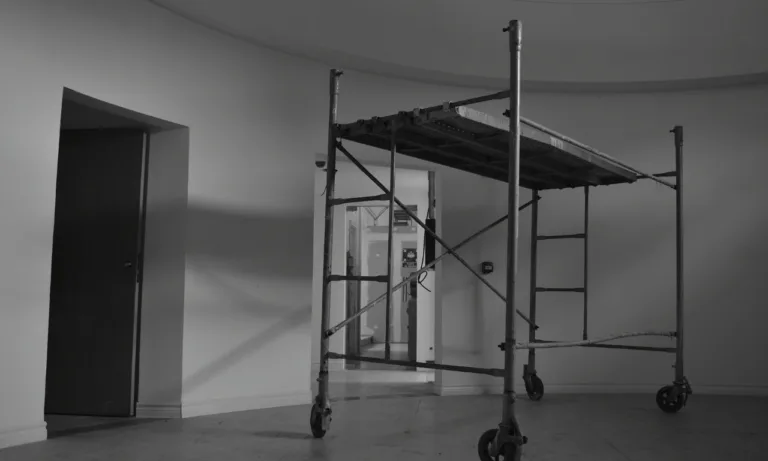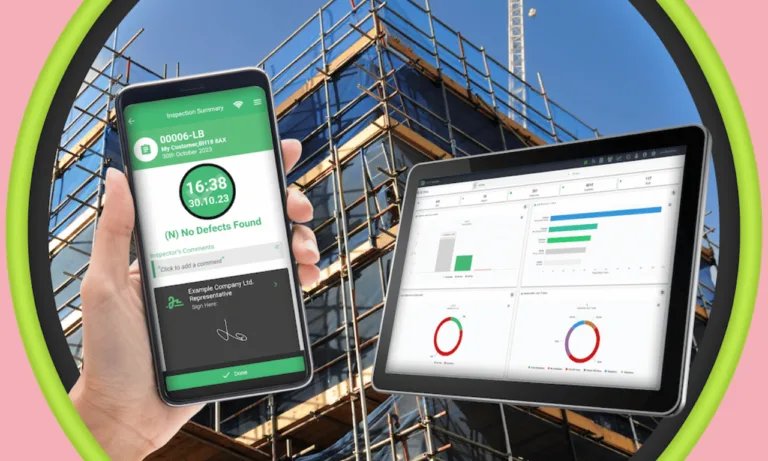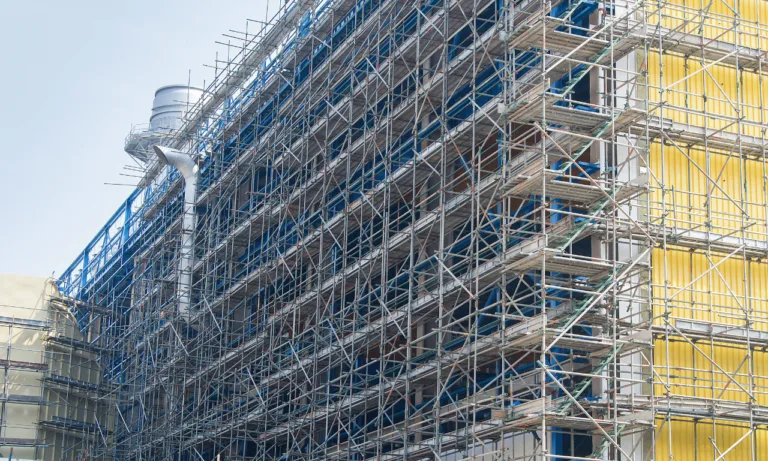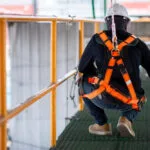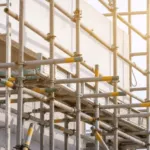Phone:
(+65)8319-0742
Selecting the correct Scaffolding Size can determine the success, safety, and efficiency of your construction or renovation work. Consider the vast array of scaffold rental size options available on the market, ensuring you find a match for the specific demands of your project. Reliability and safety are the lynchpins of construction work and getting the ideal scaffold dimensions is central to upholding these tenets.
When confronted with the decision-making process, it is important to weigh the standard scaffolding measurements against the unique specifications of your job site. The size and type of scaffolding go hand in hand with rapid assembly and safe operation. Whether in Europe, Asia, Australia, or the Americas, successful projects require a precise approach to choosing scaffolding that adheres to both regional safety regulations and individual project needs.
Key Takeaways
- Factor in availability and adaptability of scaffold rental size options for project-specific needs.
- Ensure selected Scaffolding Size adheres to regional safety and construction standards.
- Choose ideal scaffold dimensions that offer ease of assembly and disassembly.
- Consider standard scaffolding measurements in relation to load capacity and job scope.
- Recognize the importance of a proper scaffold size for the safety and efficiency of workers.
Understanding the Essentials of Scaffolding Size
When embarking on any construction project, comprehending the essentials of scaffolding is crucial to ensure optimal safety and efficiency. The varied range of system scaffolds available on the market offers diverse options that cater to different project needs, yet demand precision when choosing the right scaffold size. With the advancement in scaffolding technology, these modular designs support quick adaptability and ensure solid stability during construction endeavors.
Key Features and Adaptability of System Scaffolds
System scaffolds, such as Ringlock, Haki, Cuplock, and Layher Allround, excel in providing flexiblity combined with uncomplicated assembly. Each system comes with unique capabilities facilitating a swift modification to align with diverse project specifications. Professionals in the industry need to evaluate scaffolding equipment measurements meticulously to comply with the requirements of their specific construction projects.
Height Regulations and Dimension Determinants
Adhering to scaffold height regulations involves more than keeping within legal limits; it includes strategically calculating the scaffold dimensions to ensure a safe and productive working environment. Primer considerations such as the elevation of the structure, the surrounding landscape, and the intended use of the scaffold must dictate the scaffold sizing, ensuring clearance for workers and materials is generous and obstruction-free for transportation purposes.
Importance of Load Capacity and Scaffold Stability
Choosing the right scaffold size also depends heavily on the scaffold capacity specifications. These dictate not only how much weight the scaffold can safely support but also impact the stability of the entire structure. When considering load requirements, it is essential to choose a scaffold with a capacity that can handle the maximum expected load with an adequate safety margin, thereby ensuring the utmost stability for the jobsite.
The choice of the right scaffolding for a task is not arbitrary; it must be a deliberate decision shaped by expert knowledge of scaffold height regulations, precise scaffolding equipment measurements, and a thorough understanding of scaffold capacity specifications. Only with these considerations can project managers ensure that they are choosing the right scaffold size for their specific job, mitigating risks and boosting productivity.
Selecting the Appropriate Scaffolding Type for Efficiency and Safety

When embarking on a construction project, it is essential to select the appropriate type of scaffolding to ensure both the efficiency of work and the safety of workers. With various Types of Scaffolding Systems available, each caters to distinct project requirements, highlighting the importance of understanding their nuances.
Supported scaffolding, a conventional choice, stands as a versatile and strong structure suitable for a multitude of projects, particularly beneficial for situations involving heavy loads and tall structures. Its adjustability and robust framework offer reliable stability for both workers and materials.
Conversely, suspended scaffolding presents an ideal solution for projects with the necessity to keep the ground free of obstructions. Such systems are commonly utilized for maintenance work such as window cleaning or exterior painting on high-rise buildings.
Mobile scaffolding, with its ease of movement, becomes the practical selection for tasks that require frequent relocation of the scaffold. This type is highly favored in small to medium-sized projects where maneuverability and flexibility are key.
- Supported scaffolds cater to substantial, steady tasks
- Suspended scaffolds suit tasks with no ground disturbance
- Mobile scaffolds are optimal for changeable work environments
| Type of Scaffolding | Use Case | Key Feature |
|---|---|---|
| Supported Scaffolding | High-rise constructions | Stability and Load Capacity |
| Suspended Scaffolding | Exterior maintenance | Minimal ground disruption |
| Mobile Scaffolding | Dynamic project areas | Mobility and Adaptability |
In conclusion, matching the scaffolding type to the specific demands of the project is critical for ensuring efficiency and maintaining high safety standards. Whether choosing supported, suspended, or mobile scaffolding, consider the structure’s features such as adjustability and capacity to handle the intended workload. This thoughtful selection process ensures that each construction task is addressed with the most suitable scaffolding solution.
Analyzing Scaffolding System Variations and Their Capacities

As the construction industry evolves, so does the complexity of its scaffolding needs. Professionals today must juggle multiple variables when selecting a scaffold system layout that will ensure efficiency, versatility, and above all, safety on the job site. The deployment of Ringlock scaffolding and Cuplock scaffolding systems reflects a commitment to these priorities, offering reliable solutions adaptable to a wide array of architectural challenges.
From Ringlock to Cuplock: System Scaffold Classifications
With innovative design elements, Ringlock and Cuplock scaffolding systems present unparalleled functionality in their respective classes. The Ringlock system, recognized for its circular nodes and versatile junctions, enables multi-angle connections, making it a preferred choice for complex structures. Cuplock scaffolding, on the other hand, thrives in scenarios that require speedy erection and dismantling, thanks to its unique cup-shaped locking mechanism.
Deciphering Scaffold Platform Sizes and Equipment Measurements
Choosing the correct scaffold platform sizes affects the success of construction operations. Not only do platform dimensions impact the working area, but they also dictate the level of movement and equipment that can be safely accommodated at height. Detailed attention to equipment measurements, including the length and width of platforms, is essential for maintaining a balanced and secure scaffold system layout.
| Scaffold System | Platform Size (ft) | Load Capacity (lb) | Pros | Cons |
|---|---|---|---|---|
| Ringlock | 6×2.5, 8×2.5, 10×2.5 | 500-750 per platform | Multi-directional connections, adaptable to complex designs. | May require more planning for intricate designs. |
| Cuplock | 6×4, 8×4, 10×4 | 600-850 per platform | Fast assembly and disassembly, robust structure. | Slightly less flexibility in angular connections. |
Understanding the contrast between Ringlock and Cuplock systems, particularly in terms of scaffold platform sizes and load capacities, empowers construction professionals to tailor their scaffold system layout choices to the specific demands of their projects.
Factors Influencing Your Scaffolding Size Decision

As the construction industry evolves, the selection of appropriate scaffolding becomes increasingly responsive to an array of considerations. Among these, scaffold stability remains a cornerstone, ensuring the safety of workers and the durability of the construction process. The adaptability of scaffolding solutions allows project managers to tailor resources to the unique demands of each site, affirming the necessity for versatile scaffold systems.
Moreover, cost-effectiveness drives decision-making within the parameter of affordability, influencing whether to purchase or rent scaffolding. This economic aspect must be balanced with construction industry demands for not only economic efficiency but also consistent compliance with regulatory standards. The following factors elaborate on the complex interplay of elements that guide professionals in making informed scaffolding size decisions:
- Load capacity and project scale: structural requirements set the baseline for selecting scaffolding with adequate strength.
- On-site spatial constraints and storage: practical limitations dictate the scaffolding’s footprint.
- Project duration and frequency of scaffold use: long-term projects may benefit from purchase, whereas short-term or one-off tasks might suggest rental.
- Safety standards: non-negotiable criteria that factor into every aspect of scaffolding choice.
In summation, a multidimensional approach, weighing factors such as scaffold stability, adaptability, cost-effectiveness, and overarching construction industry demands, is indispensable when assessing scaffolding size options. This ensures the mobilization of scaffolding that is not only economically viable but robust and compliant, inextricably tied to the successful outcome of construction undertakings.
Conclusion
In the realm of construction, the meticulous selection of scaffolding is not just a logistical matter but a cornerstone of job site safety and efficiency. It’s paramount that every phase of construction planning integrates professional scaffolding experience, which can significantly influence both the immediate and long-term success of a project. By prioritizing such expertise, one can ensure that the work environment meets the highest scaffolding safety standards, ultimately protecting the welfare of all stakeholders involved.
Key to a project’s achievement is not only the scaffolding employed but also the reliability and efficiency of the rental equipment for construction. Engaging with established firms like Sunbelt Rentals Scaffold Services transcends the mere provision of materials, encompassing expert guidance in design, implementation, and aftercare. This extends to aerial work platforms, which elevate a project’s capability to execute tasks precisely and safely at varied elevations.
In closing, settling for the appropriate scaffold size entails more than just measurements; it’s an investment in the operational resilience and security of construction ventures. It behooves those responsible for scaffold procurement to align with vendors renowned for their formidable scaffolding systems and staunch commitment to safety. Thus, a prudent selection process, backed by substantial scaffolding savoir-faire and stringent adherence to safety protocols, forms the scaffold of assured construction excellence and labor well-being.
FAQ
What are the ideal scaffold dimensions for my project?
The ideal scaffold dimensions depend on the specifics of your project, including the height of the structure, the weight of the materials, and the number of workers who will be using the scaffold. Measure the height and width of the work area, and consider the load capacity and scaffold platform size needed to ensure a safe and efficient workspace.
How do I determine the right scaffold rental size options?
Determine the scaffold rental size by considering the extent and duration of your project. For short-term projects or those with limited space, renting smaller, mobile scaffolds might be more practical. For larger projects that require more extensive work at height, a more robust system scaffold with appropriate dimensions would be ideal.
What are standard scaffolding measurements, and why are they important?
Standard scaffolding measurements typically include a width of 5 feet, a length ranging from 7 to 10 feet, and varying heights based on need. These measurements are crucial for ensuring the structure’s stability, the safety of workers, and for compliance with regulatory standards.
How can I ensure compliance with scaffold height regulations?
Compliance with scaffold height regulations can be ensured by familiarizing yourself with local and national standards for scaffold construction and use. These may dictate maximum heights, required guardrails, and other safety features. Always follow the manufacturer’s guidelines and professional advice for the particular type of scaffolding you are using.
Why is understanding scaffolding equipment measurements vital when choosing the right scaffold size?
Understanding scaffolding equipment measurements is vital because these dimensions affect the stability, load capacity, and overall safety of the scaffolding system. Accurate measurements are necessary to accommodate the specified weight limits, and ensure the scaffold fits within the working area without causing hazards.
How do I calculate the scaffold capacity specifications for my project?
To calculate scaffold capacity specifications, first determine the total weight it needs to support, including workers, tools, and materials. Then, choose scaffolding with a load capacity rating that exceeds this total weight to ensure safety and regulatory compliance. Manufacturers’ specifications and industry standards will guide you in choosing a scaffold with the appropriate capacity.
What are the benefits of system scaffolds for adjustability and adaptability?
System scaffolds offer exceptional adjustability and adaptability, allowing them to accommodate various project shapes, sizes, and complexities. They usually come with modular components that can be configured for different heights and platform sizes, enhancing their utility in a broad range of construction scenarios.
How do I select between supported scaffolding, suspended scaffolding, and mobile scaffolding for my project?
Select the scaffolding type by evaluating the project’s requirements. Use supported scaffolding for heavy loads and stability in construction, suspended scaffolding for work on tall buildings where the ground must remain clear, and mobile scaffolding for tasks that require movement and flexibility within the worksite.
What differentiates Ringlock from Cuplock scaffolding?
Ringlock and Cuplock scaffolding are differentiated by their connection mechanisms and adaptability. Ringlock features circular nodes that allow for multi-directional connections, making it versatile for complex structures. Cuplock uses a cup-and-blade system for quick and efficient connections, providing a robust solution for heavy loads and high-rise construction.
How do I decipher scaffold platform sizes and equipment measurements?
Decipher scaffold platform sizes and equipment measurements by referring to the manufacturer’s specifications and ensuring they fit within the work area. Considerations should include the required working space for workers and materials, as well as safe access and egress to and from the scaffold platform.
What aspects of scaffold stability should be factored into sizing decisions?
Scaffold stability should factor in the base support, the condition of the ground or surface, the height to base ratio, secure bracing, and guardrails. A stable platform reduces risks of tipping or collapsing, thereby enhancing worker safety.
How does adaptability influence the choice of a scaffolding system?
Adaptability is key in choosing a scaffolding system as it affects the scaffold’s ability to conform to varied architectural designs, work at different heights, and adjust to changes in the project scope or conditions. It also impacts the potential for reuse in future projects, adding value to the investment.
Why is cost-effectiveness a significant factor when selecting scaffolding?
Cost-effectiveness is significant as it determines the affordability and financial viability of the scaffolding system for a project. It includes initial costs, potential for reuse, maintenance expenses, and labor for assembly and disassembly. A cost-effective solution maximizes the project’s budget while ensuring quality and safety.
How do construction industry demands affect scaffolding size decisions?
Construction industry demands affect scaffolding size decisions through evolving safety standards, the complexity of architectural designs, and the need for quick and efficient construction methods. These demands push for scaffolding systems that offer flexibility, durability, and compliance with stringent safety regulations.
Why should I seek professional scaffolding experience?
Seeking professional scaffolding experience is crucial because experts possess the knowledge and skill to assess the requirements of your project accurately, recommend the most suitable scaffolding solution, and ensure that scaffolding is erected and dismantled safely, adhering to industry standards and regulations.
How do scaffolding safety standards impact my choice of scaffolding?
Scaffolding safety standards impact your choice by dictating the maximum loads, required dimensions, and safety features a scaffold must have. Complying with these standards ensures the well-being of workers and the prevention of accidents, falls, and structural failures.
What are the considerations when looking at rental equipment for construction?
When considering rental equipment for construction, evaluate the project’s duration, frequency of use, storage capabilities, transport logistics, and compatibility with existing equipment. Renting provides a cost-effective option for access to various scaffolding systems without incurring ownership costs.
What are aerial work platforms, and when should they be used?
Aerial work platforms are mobile elevating work platforms used for reaching high areas, such as in repairs, maintenance, and construction. They should be used when tasks require vertical mobility, safety, and efficiency, particularly in areas inaccessible by traditional scaffolding.





